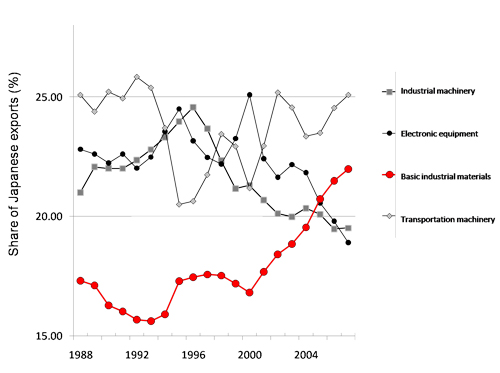SOZAI (Basic Industrial Materials) – A Source of Vitality for Japan
An Analysis from International Material Flows in Recent Years
2009.02.27
National Institute for Materials Science
Dr. Kohmei Halada, Managing Director of the Innovative Materials Engineering Laboratory, National Institute for Materials Science has summarized and analyzed the condition of international material flows in foreign trade in recent years.
Abstract
- Dr. Kohmei Halada, Managing Director of the Innovative Materials Engineering Laboratory, National Institute for Materials Science (Independent Administrative Institution; President: Teruo Kishi) has summarized and analyzed the condition of international material flows in foreign trade in recent years. The results of his work will be presented in the Journal of the Japan Institute of Metals to be published this March.
- The results of Dr. Halada’s analysis show that, in spite of rapid changes in material flows worldwide, Japan continues to occupy a key position in virtually all basic industrial materials, including various types of metals and others, and has become the largest basic materials trading country.
- From the viewpoint of global trading patterns, material flows have expanded from the traditional triaxial structure of the United States, Europe, and Japan to include Eastern/Southern/Northern Europe and Central/Eastern Asia, giving rise to new conditions which are different from the conventional understanding. For example, the largest steel scrap importing nation is now Turkey, and China has become the largest exporter of steel products.
- Amid these trends, Japan’s ratio of basic industrial materials relative to all exports has expanded rapidly since the 1990s and now exceeds 20%. Basic materials recently surpassed both transportation machinery products and electronic products, showing that the basic industrial materials industry has become a sector that supports Japan’s international competitiveness.
- In Japan, it has not been possible to assess the overall growth of basic industrial materials such as iron and steel, nonferrous metals, chemical products, plastics, and others, which are given the general name “engineering materials,” because statistics are collected and analyzed in individual fields in this country. In the future, Dr. Halada’s report recommends that these materials be presented to the world strategically as “sozai,” using the Japanese word for “basic materials.

Transition of export sharing
